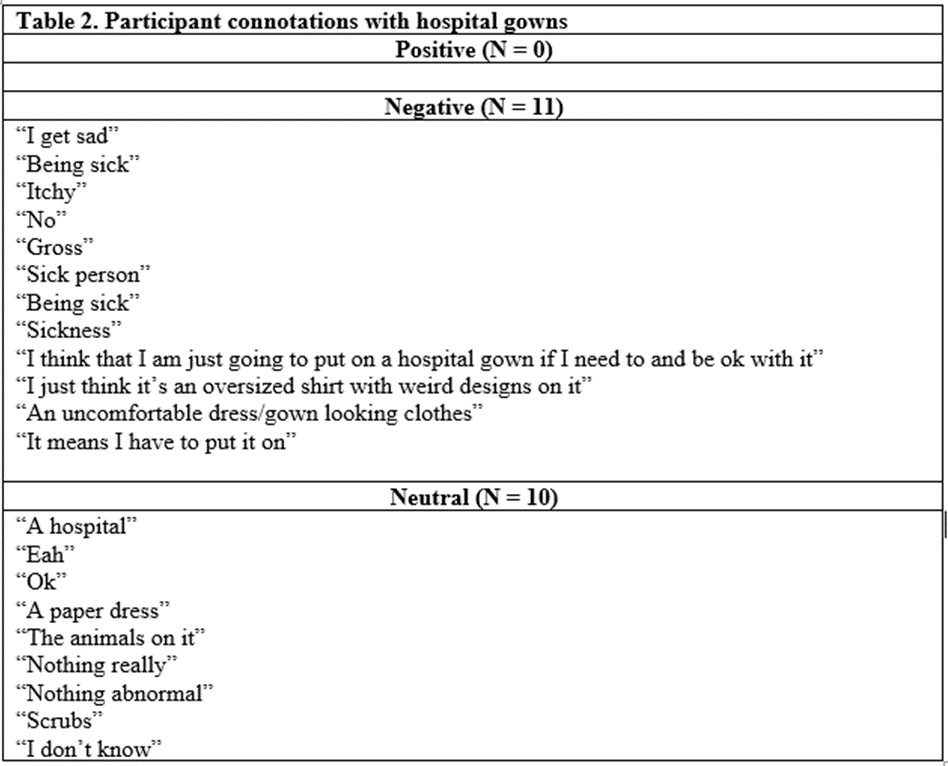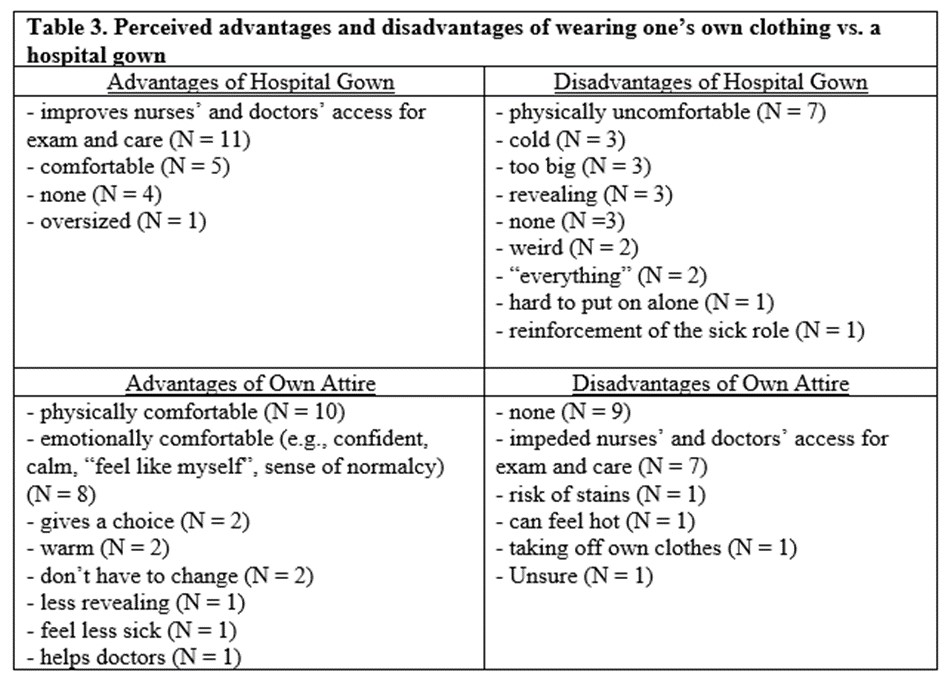Palliative Care
Palliative Care
424 - Who is Behind the Gown?: Investigating Physical Comfort and Emotional Distress Related to Inpatient Attire Among Children with Cancer
Friday, April 28, 2023
5:15 PM - 7:15 PM ET
Poster Number: 424
Publication Number: 424.147
Publication Number: 424.147
Christy M. Lucas, UPMC Children's Hospital of Pittsburgh, Pittsburgh, PA, United States; Molly C. Mack, UPMC Children's Hospital of Pittsburgh, Pittsburgh, PA, United States; Maura Miglioretti, Children's Hospital of Pittsburgh, Pittsburgh, PA, United States; Scott Maurer, UPMC Childrens Hospital of Pittsburgh, Pittsburgh, PA, United States

Christy M. Lucas, MD (she/her/hers)
Residents Physician, PGY-3
UPMC Children's Hospital of Pittsburgh
Pittsburgh, Pennsylvania, United States
Presenting Author(s)
Background: Hospital gowns can feel dehumanizing to patients. Individualizing patient attire has been shown to improve satisfaction and comfort in adults, however this has not been investigated in children, particularly in those with cancer.
Objective: To investigate patient attire opinions in the pediatric oncology population via a mixed-methods survey.
Design/Methods: A 39-item survey evaluated pediatric oncology patients’ perceptions of patient attire, utilizing multiple choice questions, Likert scales, and free response. Children aged 8-18 years were recruited from in- and out-patient settings at a large pediatric cancer treatment center. Parental consent and child assent were obtained. Data were analyzed using Qualtrics and thematic analysis. Participants were compensated with a $5 gift card. This study received Institutional Review Board approval.
Results: Twenty-four patients were approached, and 21 consented to participate (9 female, 12 male) (Table 1). Only three participants felt like they had to always wear a gown, and 19 felt they had at least some choice in attire. No patients reported always wishing someone would ask what they wanted to wear, and most (14/21) expressed no or low desire to be asked. Most children (15/21) always or mostly felt more comfortable in their own attire while simultaneously indicating that they "never" felt more comfortable in a hospital gown. Rarely, subjects indicated they preferred a hospital gown if admitted (2/21), felt more comfortable in a gown when feeling well in the hospital (1/21), or felt more comfortable in a gown when feeling sick in the hospital (2/21). They did not write any positive connotations with “hospital gown” (Table 2). Participants found gowns to be good in that gowns helped providers do their job (n = 11) but found them to be uncomfortable (n = 7). Participants found their own attire to be good in that it was comfortable physically (n = 10) and emotionally (n = 8). Nine children could not name a disadvantage to wearing their own clothes; 7 noted it impeded providers’ access (Table 3).
Conclusion(s): In this sample, children with cancer indicate general displeasure with gowns and prefer to wear their own clothes. They are less distressed by gowns if it eases or improves their medical care, and they prefer to be told when wearing a gown is necessary rather than being asked what they wish to wear. Providers may ease child discomfort and emotional stress in the hospital by using the patient's own clothes as default hospital attire with clear instructions for when a gown is necessary for good clinical care.
.jpg)


